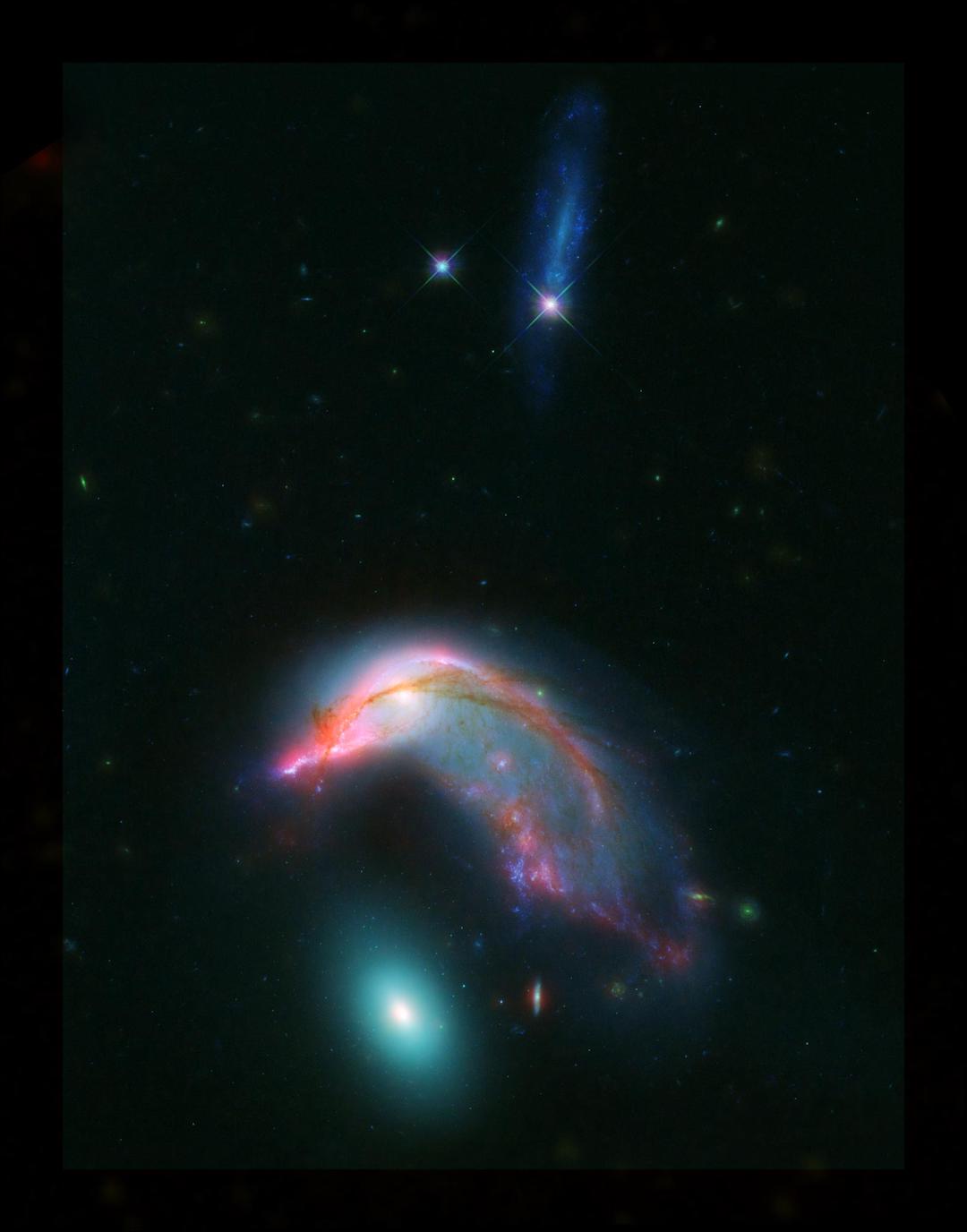NASA Shows Off Galaxies Resembling Cosmic Penguin And An Egg
By Mikelle Leow, 22 Jan 2024

Image via NASA / NASA-ESA/STScI/AURA/JPL-Caltech
How high can birds fly? According to NASA, millions of light-years up. In 2018, astronomers captured an image that looked strangely like something out of a zoo enclosure: a penguin guarding an egg. Only this time, they were nested deep in space.
Recently, the space agency brought the visual, courtesy of the Spitzer and Hubble space telescopes, back into the limelight through an Instagram post, humorously dubbing the aquatic bird sighting as a “cosmic noot.” An illustrated outline makes the fair-feather shapes of the interacting galaxies known as Arp 142, located about 23 million light-years away from Earth, more apparent.
The ‘penguin’ of this galactic duo, known as NGC 2936, was likely once a standard spiral galaxy, flat and symmetric. However, its encounter with its neighbor has dramatically altered its appearance. The once orderly swirly arms now appear twisted and distorted due to the gravitational pull from NGC 2937, the ‘egg’ of the pair.

Image via NASA-ESA/STScI/AURA/JPL-Caltech
In the graphic, the bluish hues represent hot, newly-formed stars captured in visible light by Hubble, while the red filaments, seen in infrared light by Spitzer, indicate strands of gas mixed with dust.
NGC 2937, the ‘egg’, presents a stark contrast. It seems almost featureless, emitting a greenish glow indicative of older stars. The lack of visible red dust suggests that this galaxy has exhausted its supply of star-forming gas and dust. Although it’s also influenced by the presence of NGC 2936, its star distribution remains smooth, hiding any clear signs of distortion.
These two galaxies are gradually being drawn together by their mutual gravitational attraction. Over time, they will become one, combining their stars, gas, and dust. Such mergers are considered a crucial process in the evolution of most large galaxies, including our own Milky Way.
Unfortunately, NASA did not address the age-old question of which came first, the penguin or the egg.
[via PetaPixel, InsideNova.com, NASA, images via NASA-ESA/STScI/AURA/JPL-Caltech]





